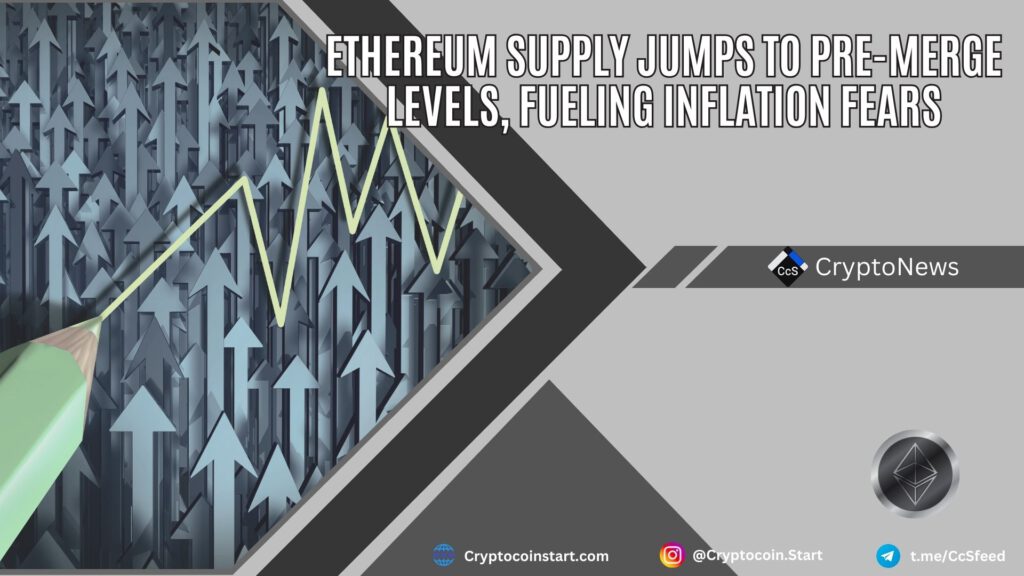
Why Is Ethereum’s Supply Increasing? The Impact of the Dencun Upgrade
The Dencun upgrade introduced several new features to Ethereum, most notably blob transactions. These transactions are designed to optimize data handling, particularly for Layer 2 (L2) scaling solutions. Unlike traditional transactions, blob transactions utilize a separate fee unit called “blob gas,” which does not contribute significantly to the burning of ETH.
Prior to the Dencun upgrade, a portion of transaction fees was burned, resulting in a reduction of the overall Ethereum supply. However, with more activity shifting toward blob transactions, the proportion of fees burned has decreased, leading to a net increase in Ethereum’s supply instead of a decrease.
Key Factors Behind Ethereum’s Supply Growth
- Introduction of Blob Transactions: Blob transactions use “blob gas” instead of ETH, reducing the burn rate.
- Increase in Layer 2 Activity: Ethereum’s scaling solutions are encouraging more transactions off-chain, impacting the supply dynamics.
- Memecoin Rally on Solana: A surge in memecoin activity has drawn users and liquidity away from Ethereum, reducing on-chain activity.
- New Layer 2 Networks: The launch of several Ethereum L2 networks post-Dencun has further diverted activity from the mainnet.
Migration to Solana and Layer 2s
The recent memecoin rally has seen a shift of users and liquidity towards Solana, affecting Ethereum’s on-chain activity. As more projects migrate to Layer 2 networks and Solana, Ethereum has experienced a reduction in its on-chain transactions, which has a direct impact on the amount of ETH burned in transaction fees.
Several new Ethereum Layer 2 networks launched after the Dencun upgrade have further exacerbated this trend, as they allow for cheaper and faster transactions, making them more attractive than using Ethereum’s mainnet. This migration is contributing to a decline in Ethereum’s network fees, and subsequently, a reduced burning rate.
Is the Supply Increase a Concern for Ethereum?
While the increase in Ethereum’s supply may not be an immediate concern, it does present challenges to Ethereum’s “ultrasound money” narrative. This narrative positions ETH as a deflationary asset superior to Bitcoin as a store of value. The shift from deflationary to inflationary dynamics could affect the perception of Ethereum’s economic stability.
According to Jaehyun Ha, an analyst at Presto Research, while the supply increase is not an immediate threat, it may raise questions about Ethereum’s long-term value proposition. Additionally, the upcoming Pectra upgrade, expected in late 2025, could further increase the blob transaction limit, potentially accelerating inflation and affecting the network’s overall supply dynamics.
The Security Implications of Ethereum’s Increasing Supply
There are also concerns regarding the potential security implications of an increasing ETH supply. According to Byoungjoon Kim, a researcher at DeSpread, a prolonged increase in supply could weaken Ethereum’s security under the Proof-of-Stake (PoS) model. This is because the price of ETH is directly linked to the economic incentives for validators, and a reduced burn rate could influence these incentives, possibly affecting the overall security of the network.
Ethereum ETF Inflows Continue to Show Strong Institutional Interest
Despite concerns over inflation, institutional interest in Ethereum remains strong. According to data from SoSoValue, Ethereum spot ETFs saw a net inflow of $308 million on February 4, marking four consecutive days of positive inflows. This is in line with the continued strength of the Ethereum market, despite the increasing supply.
Additionally, Bitcoin spot ETFs also saw significant activity, with $341 million in net inflows, including $249 million into BlackRock’s IBIT fund. These figures highlight the ongoing demand for digital assets, including Ethereum, from institutional investors.
Conclusion: What’s Next for Ethereum?
The coming months will be critical for Ethereum as it navigates the challenges posed by rising inflation, upcoming network upgrades, and ongoing governance debates. The increasing supply of ETH, combined with significant institutional interest, will continue to shape Ethereum’s future trajectory. How Ethereum addresses these concerns will determine its ability to maintain its status as a leading smart contract platform and deflationary asset in the cryptocurrency space.

